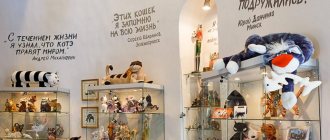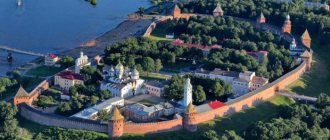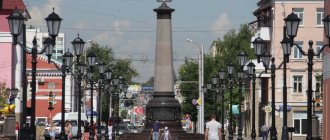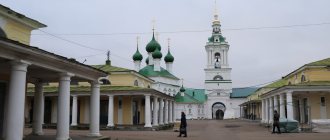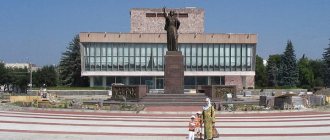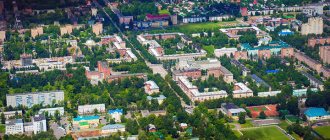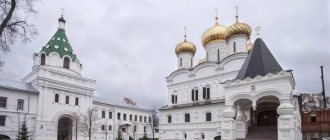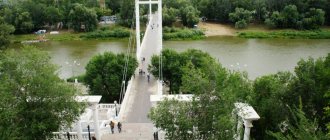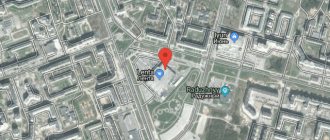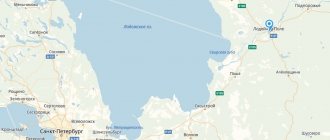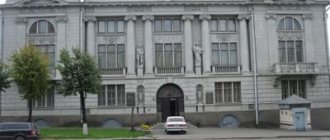> Countries Italy
Milan is the capital of Lombardy and northern Italy. It is unlike other Italian cities and is the site of important historical events dating back to the Roman Empire and the cradle of Italian culture with many important historical monuments. The architectural heritage includes dozens of ancient Romanesque churches, unique Gothic cathedrals, magnificent Baroque and neoclassical buildings and graceful Art Deco buildings.
- Sights of Milan
- Excursions
- How to get there
- Map
City of Milan (Italy)
Milan is the main city of Northern Italy and the capital of the Lombardy region. This is a modern metropolis, which is considered the business and financial center of the country. Milan is the capital of fashion and business, the most stylish, expensive and rich city in Italy, which is rated on a par with Paris and London among lovers of entertainment and shopping. But this is not the only thing the capital of Lombardy is famous for. Here you can look at such famous attractions as: the magnificent Duomo, the Sforzesco Castle, included in the UNESCO World Heritage List, the Church of Santa Maria delle Grazia, which houses the legendary fresco by Leonardo da Vinci “The Last Supper” and many other equally interesting historical and cultural monuments.
If Rome represents “old Italy,” then Milan is its modern symbol. Despite some similarities with typical Italian cities, it is very different architecturally and atmospherically. Milan has a different rhythm of life, it itself is quite gray, since many buildings are built of limestone or dark stone, and the influence of Austrian and French styles is noticeable in the architecture. But despite all its seriousness, Milan is still a cheerful and emotional Italy!
Gallery of Contemporary Art
The Royal Villa (Villa Reale) is a majestic mansion in the classicist style, surrounded by a marvelous green park.
It was within the walls of this villa that the Gallery of Modern Art (Galleria d'Arte Moderna) was organized in 1921. The exhibition was based on the rich collection of art objects that belonged to the family of the Marquises of Folyani. Over time, works by artists and architects of the 19th-20th centuries appeared in the halls of the museum. Sculpture by Antonio Canova, Medardo Rosso, Umberto Boccioni and Giacomo Balla, as well as painting by Silvestro Lega, Giovanni Fattori, Giovanni Sigantini Segantini) is a great success among visitors. In addition to the works of Italian masters, French masters of the brush are also represented.
Geography and climate
Milan is located in northern Italy between the Po Valley in the south and the foothills of the Alps in the north. In the immediate vicinity there are large picturesque lakes: Como, Lugano, Maggiore.
On the streets of Milan
The climate is humid subtropical. Summer is hot, autumn is rainy, and winter is quite mild with little frost. In cold weather, fog is quite common.
Pinacoteca Brera
Pinacoteca di Brera is the most popular art gallery in Milan.
The attraction is located in the central quarter of the city - Brera. The two-story baroque palace of the 17th century provided the ideal setting for a grandiose public gallery. In the spacious halls of the Pinakothek you can leisurely and tastefully admire grandiose examples of painting. The courtyard of the palazzo is decorated with sculptures in antique style. In 38 rooms, numbered with Roman numerals, there are paintings by famous Renaissance masters: Bromante, Andrea Mantegna, Raphael (Raffaello Santi), Lorenzetti (Ambrogio Lorenzetti), Giovanni Bellini, Tintoretto. Romanticism is represented by the works of Francesco Hayez, expressionism by Amadeo Modigliani, realism by Caravaggio. Flemish masters are also present.
Story
Milan became part of the Roman Empire in the 2nd century BC. At that time the city was called Mediolan. In the 4th century it vied with Rome for supremacy in the Western Roman Empire. But after some time it was destroyed by the Huns and Ostrogoths and fell into decay. In the 6th century, the ancient German tribe of Lombards settled here, which gave the name to the future region - Lombardy.
Panorama of Milan
In the 11th century, Milan's importance increased again. It became the capital of an independent state. Strengthening his position in the region did not please Frederick Barbarossa, who ravaged the city in 1162. Despite this, in 1176 the King of Germany and the Holy Roman Emperor were defeated, and Milan received privileges that allowed it to become one of the richest cities in Europe. In 1277, in the confrontation between the Guelphs and the Ghibellines, the latter won. Milan became a monarchy, and the ruling dynasty was the Visconti family, which in 1450 replaced the Sforza family. During the reign of Sforza, the great Leonardo da Vinci and Bramante worked and lived in Milan.
Duomskaya Square
In the 15th century, the Duchy of Milan was under the rule of the French, and from 1540 to 1706, under the rule of the Spanish kingdom. During this period there was economic and cultural stagnation. In the 18th century, the city became part of Austria-Hungary and was (with a short break) under Habsburg rule until 1859. Milan became part of Italy in 1861. They even wanted to make it the capital, but in the end ancient Rome was chosen. During the Second World War the city was pretty much destroyed.
Milan Cathedral
The main attraction of the city is the Milan Cathedral Duomo (Duomo di Milano). Italy is proud of its outstanding temple, which has an impressive size and solemn decoration. It took the city authorities more than 6 centuries (1386-1965) to build the grandiose Catholic church! The snow-white building is made at the junction of different styles, but most of all one can feel the “flaming Gothic”. The combination of narrow spiers reaching into the sky, elaborate small decorations and a large number of statues makes a powerful impression.
There is an observation deck along the perimeter of the roof, which offers incredible views of the city. A great place for photography and video shooting! The highest point of the cathedral is a 106.5 m high spire, decorated with a gilded statue of the Madonna. The temple is designed for 40 thousand parishioners, which puts it third in the world in terms of capacity. And in terms of size, the Duomo is the fifth largest in the world!
How to get there
Milan has two international airports: Linate and Malpensa. The main international airport is Malpensa. You can get from there to the city center by train. Some low-cost airlines fly to Bergamo Airport.
Milan Central Station receives trains from most major Italian cities: Turin, Rome, Naples, Florence, Venice, as well as from many European capitals and cities: Barcelona, Zurich, Geneva, Paris, Munich, Stuttgart, Vienna, Prague. The train station has access to the metro. Another important railway station is Cadorna. The Malpensa Airport Express stops here and there is also a metro.
Streets of Milan
There is a popular saying that “all roads lead to Rome.” So, all roads in Northern Italy go to Milan. The city has excellent transport accessibility. But it should be noted that highways are toll roads.
Milan has a well-developed public transport system: metro, trams and buses. There is a single ticket, which can be purchased at special machines and tobacco kiosks. The fare is 1.5 euros. There are 4 metro lines: red, green, yellow and purple lines.
Monumental Cemetery
The Monumental Cemetery (Cimitero Monumentale) is a memorial complex measuring 250 thousand m2, located almost in the center of Milan. The operation of this complex began at the end of the 19th century. Since then, many prominent Italian figures of the 19th and 20th centuries have found their rest in the cemetery. The extensive alleys of the memorial lead to the Chapel of Glory (Il Famedio), a memorial place where the honorary residents of the city are buried.
The monumental cemetery is a surprisingly peaceful and extraordinary place. Most of the tombstones are decorated with intricate sculptures and bas-reliefs, and cypress and fir trees are planted around the graves. Residents of the city who left their mark on its history deserve the honor of resting in the Palanti mausoleum (mausoleo Palanti).
Purchases
Milan is one of the main centers of world shopping and fashion. Here you can find everything: from fashion brands to products from small designer workshops. The main shopping area is the Fashion Quadrangle, which is located between the Duomo, Piazza Cavour and Piazza San Babila. Most of the famous boutiques can be found on the streets of Montenapoleone, Della Spiga, Vittorio Emanuele, Sant' Andrea, Porta Venezia and Manzoni. There are as many as five large outlets near Milan where you can buy designer and branded items at big discounts. The largest outlet is Serravalle. It is located an hour's drive from Milan. Buses depart from the Sforzesco Castle.
Outlets around Milan
Velasca Tower
The Velasca Tower (Torre Velasca) is a 160-meter skyscraper that appeared in the central part of Milan in 1950. The 26-story giant belongs to the first generation of modern Italian architecture. City guests love to take photos of the high-rise, since the unusual design of the building makes it stand out from other buildings. The slender candle of the skyscraper expands towards the top, subtly resembling a giant mushroom.
The tower combines high-tech solutions and Gothic-style elements. In essence, the four architects who created Tore Velasca presented the Italians with their vision of a medieval castle. The skyscraper is partially used as residential apartments and an office center.
Attractions
Although Milan is not the first city many tourists associate with Italy, it does boast some wonderful sights and cultural monuments. For all its serious reputation as the fashionable, business and financial center of the country, it is a city with a rich history and cultural heritage.
Duomo
The Duomo or Cathedral of Santa Maria Nacente is a symbol of Milan, located in the heart of the city on the square of the same name. It is one of the largest religious buildings in the world (accommodates about 40,000 people) and probably the most beautiful church in the Gothic style. The Duomo was built over 4 centuries from the 14th century. Its roof is topped with 135 spiers, and its façade is decorated with 2,245 marble statues. The modest interior, strikingly contrasting with the glittering and richly patterned exterior, makes a strong impression with its 52 gigantic columns. The stained glass windows and nave of the Duomo are the largest in the world. Inside you can see a bronze candelabra from 1200, the tomb of Giacomo Medici, and the reliquary of San Carlo Borromeo. A walk along the roof of the Duomo will be very atmospheric, from where on clear days you can see the snow-capped peaks of the Alps. Next to the central passage there is an underground entrance where you can see the foundations of an ancient 4th century basilica and baptistery, discovered during the construction of the metro. Entrance to the cathedral is free. Important: entry in short skirts, shorts and bare shoulders is prohibited.
Gallery of Victor Emmanuel II
Gallery of Victor Emmanuel II - located slightly away from the Duomo and connects the cathedral square with Piazza La Scala. It was built in the 70s of the 19th century and at that time was the largest shopping gallery in Europe. There are expensive boutiques and elegant cafes here. The gallery is a superb example of 19th century architecture.
La Scala
La Scala - one of the most famous opera houses in the world is located in a rather inconspicuous building in a small square. Accommodates 2,800 spectators. The season lasts from December to May.
Santa Maria delle Grazie
Santa Maria delle Grazie is a 15th-century brick Gothic church with an early Renaissance Bramante dome. Gained worldwide fame thanks to Leonardo da Vinci's fresco "The Last Supper". Unfortunately, the church and the fresco were damaged during bombing during the Second World War. Leonardo's fresco was painted in the refectory of a former Dominican monastery at the end of the 15th century. Unfortunately, da Vinci's fresco is constantly being destroyed and restored (Leonardo painted the fresco on damp plaster).
Sforza Castle
The Sforzesco Castle is one of the main attractions of Milan, included in the list of UNESCO World Heritage Sites. The castle was built in the 14th century and was the main residence of the Milanese rulers - the Visconti and Sforza. Now there is a magnificent museum with such rarities as Michelangelo’s last masterpiece, paintings by Bellini, Correggio, Mantegna, Berggone, Foppa, Lotto, Tintoretto, Egyptian and other antiquities, medieval weapons. In front of the 70-meter Torre de Filare there is a large fountain built under Mussolini. Behind the castle is the large neoclassical Sempione Park, one of the favorite places of Milanese.
Cinque Vie Historic District
The historic district of Cinque Vie is the oldest part of Milan, located between Piazza Cordusio, Via Meravigli and Via Orefici. In this area you can find many Roman archaeological sites such as the theatre, the imperial palace and the imperial mint. In addition, there are many ancient churches, such as Santa Maria alla Porta (the Baroque pearl of Milan), San Sebastiano, San Giorgio el Palazzo, Santa Maria Podone, San Maurizio al Monastero Maggiore .
Church of San Maurizio
San Maurizio is a Baroque church whose interior is considered the most beautiful among religious buildings in Milan. It was built at the beginning of the 16th century for a Benedictine nunnery. Inside the church is painted with beautiful frescoes by the best masters of Lombardy. The monastery was built on the ruins of an ancient Roman circus and walls. Now there is an archaeological museum here, which will introduce Milan during the Roman Empire.
Pinacoteca Brera
The Pinacoteca de Brera is a 17th-century Renaissance palace that originally housed a Jesuit school. Now it is one of the best art museums in Italy. Paintings by the best artists of Lombardy and students of da Vinci, Venetian masters, Raphael, Titian, Rembrandt, Rubens, Picasso and many others are exhibited here.
San Ambrogio
Sant'Ambrogio is one of the oldest churches in Milan, founded in the 4th century by Saint Ambrose, who is the patron saint of the city. The church is a masterpiece of Romanesque architecture. It was built in the 12th century around the choir of an earlier church from the ninth century. Notable is the ancient altar from the 9th century, located among those built during the Carolingian period.
Cimitero Monument
Monumento Cimitero is a monumental cemetery from the late 18th century that is famous for its rich tombstones and Art Nouveau sculptures.
Da Vinci Museum
The Da Vinci Museum is a national museum of science and technology located in a former monastery. Of particular interest is the Leonardo da Vinci gallery with working models of many of his inventions and machines, created according to his drawings and drawings. Also on display are instruments used by Galileo, Newton and Volta.
Naviglio
Naviglio is an atmospheric place in the area of the canal of the same name with many restaurants and clubs.
Sant'Eustorgio
Sant'Eustorgio is a 12th-century Romanesque basilica with a beautiful tall bell tower. Nearby is another church, San Lorenzo Maggiore, dating from the early Christian period. The Renaissance dome was added in 1574, the mosaic in the chapel of St. Aquilina dates from the 4th century. In front of the church is a portico of sixteen Corinthian columns, which is the largest surviving monument from the Roman period.
Arch of Peace
The Arch of Peace is an interesting example of neoclassical architecture. This triumphal arch was built in the first half of the 18th century and is located in the center of a large square behind the Sforzesco Castle and the park. Construction of the arch began under Napoleon Bonaparte, but was completed after his defeat at Waterloo by the Austrian monarch Francis I, who dedicated it to peace.
Church of Santa Maria del Carmine
Santa Maria del Carmine is a church of the Carmelite Order, built in the 13th century from red brick. The church was destroyed by fire in the 14th century and abandoned. Restored in the 15th century by Antonio Solari. It is an interesting example of Lombard neo-Gothic.
Basilica of San Lorenzo
The Basilica of San Lorenzo Maggiore (St. Lawrence) is a temple built in the Renaissance style with an ancient baptistery and a Romanesque bell tower from the 12th century. The church was founded in the 4th century and is one of the oldest in Milan. A mosaic from the period of late Antiquity and several Roman columns have been preserved here.
Church of San Babila
San Babila is a brick church founded in the 11th century. The baroque building of the 16th century was rebuilt in the 19th century in the style of its original medieval appearance. The neo-Romanesque bell tower was completed in the 30s of the 20th century.
Velasca Tower
The Velasca Tower is an interesting example of civil engineering. This is a 106-meter skyscraper of an unusual architectural form.
Poldi Pezzoli Museum
In the 19th century, Gian Giacomo Poldi Pezzoli collected an impressive collection of paintings, sculptures, tapestries, furnishings, weapons, and armor. After his death, Poldi-Pezoli bequeathed his property to the public. Since 1881, the mansion of the Italian nobleman has been turned into a museum (Museo Poldi Pezzoli), open to everyone.
The walls of the house-museum, painted with dark red paint, display several hundred paintings by Italian painters. Luxury items, elegant interiors, antique ceramics, and military equipment make up a rich and somewhat eclectic exhibition. By the way, the Poldi Pezzoli Museum is a 15-minute walk from La Scala Theatre.
Guides: Italy
Pisa
Venice
May be interesting: Other cities in Italy
Sforza Castle
The Sforza Castle (or as it is also called, Castello Sforzesco) belonged to the Visconti and Sforza dynasties, who ruled Milan from 1277 to 1535.
The castle was built in 1368 and was renovated and expanded in 1450. The 70-meter tower of Torre de Filarete, built in 1452 according to the design of the architect Antonio Filarete, rises above the castle. In 1521, the tower collapsed due to lightning and was restored only in 1905.
The Castello Sforzesco is home to several museums, one of which houses a collection of ancient sculptures, including Michelangelo's last masterpiece, Pieta Rondanini, brought here in 1953 from Palazzo Rondanini in Rome.
Other museums display collections of paintings and sculptures, prehistoric and Egyptian antiquities, musical instruments, and weapons and medieval armor.
From the Sforza Castle there is a passage leading to Sempione Park.
The park was created at the end of the 19th century and initially served as a vegetable garden for the owners of the castle, and then as a military training ground for the Spaniards. Now you can walk along it in a calm environment and enjoy the greenery around.
Address: Piazza Castello
Basilica of Saint Ambrose
The Basilica of St. Ambrose was founded in 386 by the patron saint of the city, the Milanese bishop Ambrose of Milan and is one of the most ancient buildings in the city.
But the current Romanesque appearance was created in the 12th century, so most of the church is not that ancient.
Inside the temple, under a carved wooden pulpit, is the richly decorated sarcophagus of Stilicho from the 4th century.
The Chapel of San Vittore, located at the end of the southern nave of the basilica, deserves special attention. The dome and walls of the chapel are covered with the original Golden Sky mosaic.
Address: Piazza Sant'Ambrogio 15
Central station
The old central station building was built in 1864 on the site where Republic Square is now located. When the building became obsolete due to technological progress, engineer Julis Staccini began developing a design for a new building, using Union Station in Washington as a prototype.
The renovated station began its work in 1931 - from that moment on, the appearance of the station has not changed any more - strict and clear lines in the Art Deco style, popular in the 30s, unusual bas-reliefs, large sculptures as facade decoration. The most interesting part of Milano Centrale is the steel dome crowning the roof - with an area of more than 66 thousand square meters. m and a length of 341 m.
The station serves 24 platforms, from which more than 600 trains depart every day. The station has constant connections with major airports in Milan, and trains depart from it to Rome, Venice, Turin, Paris and Vienna.
Church of Santa Maria presso San Satiro
This church, hidden from the eyes of tourists and passers-by and located on one of the streets near Piazza del Duomo, from the outside will seem relatively small and not at all impressive.
But once you step inside, you will see a real gem! The magnificent stucco vaults under the hemispherical dome are truly impressive.
This church is also interesting due to the optical illusion of the architect Bramante; the frescoes on the ceilings create the appearance as if there is still a lot of space behind the altar, which is even more surprising when you enter what appears to be a small church.
Address: Via Torino 9
Bosco Verticale
Bosco Verticale
Vertical Forest (Bosco Verticale) is an unusual residential complex consisting of two landscaped towers, 110 and 76 meters high, which house 113 apartments with incredible views of the city.
Two modern skyscrapers were built in Milan's Porta Nuova district from 2009 to 2014 by Italian architects Stefano Boeri, Gianandrea Barreca and Giovanni La Varra.
The peculiarity of these skyscrapers is that about 900 trees, 5,000 shrubs and 11 thousand grass paths are planted on the terraces of each floor.
Bosco Verticale is striking in that all its plants in this complex, as well as their location, are carefully selected.
This structure changes its appearance depending on the time of year: spring flowering, summer greenery and autumn withering serve as a kind of decoration that changes in dynamics.
In addition, two 27-story skyscrapers replace a classic park area with an area of 50 thousand square meters.
And the efforts of the architects were not in vain: in 2014, two Bosco Verticale towers were recognized as the best skyscrapers of the year, receiving the International Highrise Award.
How to get to Bosco Verticale You can get to Bosco Verticale by metro line M2 to Gioia station or by metro line M5 to Isola station. Bosco Verticale address: Via Gaetano de Castillia, 17.
Navigli area
If you like to sit in a cafe on the banks of the canal in the evening or are a fan of nightclubs, then the Navigli area is the most suitable option for you.
Here you will find some of the best nightlife in Milan. But even during the day you can find something to suit every taste, for example, visit boutiques or artist master classes, sit in a cute restaurant on the embankment or attend one of the many celebrations held here.
In April, the streets along the canal are decorated with flowers for the Festival of Flowers, and during the Festa del Naviglio festival, various music concerts, theater and dance performances, exhibitions of folk crafts, and an antique market are held.
Address: Navigli
Villa Reale
Built at the end of the 18th century, the villa was intended for Ludovico Belgioioso, the Austrian ambassador to the United Kingdom. The huge building, consisting of five buildings spaced apart from each other and connected by ceilings, is surrounded by a well-kept park, the first in Italy, laid out according to English standards. The park contains sculptures by Acquisti, Canova and other famous Milanese masters.
Villa Reale
The building suffered terribly during World War II; restoration work took about twenty years, and during the restoration it was decided to complement the complex with the Pavilion of New Art. You can enter there, as well as stroll through the luxurious park, completely free of charge.
Villa Reale - when is it open and how to get there:
- address: Piazza del Villa Reale, 3;
- travel: by metro, buses, trams or taxi;
- Opening hours: daily from 09:30 to 17:30;
- cost of visiting: park - free; villa - 5 euros for children and 9 euros for adults.
Best time to travel
The tourist season in Milan lasts all year round. The largest number of tourists come to Milan in the summer months. During this period, the temperature in the city is quite high (on average 27 °C), but this does not frighten travelers.
However, the ideal time to visit the city depends on the purpose of your trip. So, if you are a shopping lover and want to visit stores of world famous brands, then you should come to Milan during the sales season. The first, as a rule, begins after the Christmas holidays and ends before the beginning of Lent. And the second season begins at the beginning of July and ends at the end of August. The exact start and end dates of sales are approved by the local government. During this time, you can buy unique branded products at a discount of up to 70%.
There are simply a huge number of tourists in the city, so buy plane tickets in advance and prepare to stand in lines for hours.
If you are a fan of opera and dream of going to the great temple of culture - the La Scala Opera House, then come to Milan in December. The theater season opens on December 7, but make sure to purchase your tickets in advance. On the same day (December 7), you will be able to witness one of the main holidays in Milan - the day of St. Ambrose, the patron saint of the city. In the morning, a solemn liturgy takes place in the Basilica of St. Ambrose. And opposite the Sforzesco Castle you can visit the fair beloved by the residents of Milan. They sell delicious sweets, antiques, clothing and a variety of Christmas gifts and decorations.
The fair in honor of St. Ambrose's Day takes place over three days.
A large number of tourists come to Milan in February. The purpose of their trip is to visit the colorful Ambrosian Carnival. It takes place during Maslenitsa week. Having visited it, you can not only watch the colorful procession of residents in bright costumes, but also try traditional sweets, as well as attend a large number of free theatrical performances and parties.
The Ambrosian Carnival is one of the most exciting events in Milan
La Scala Theater
La Scala Theater
The famous La Scala Theater is a world center of opera culture with a brilliant history.
The theater building, which was built in 1776-1778 according to the design of the Italian architect Giuseppe Piermarini on the site of the Church of Santa Maria alla Scala, was opened on August 3, 1778 with the production of Antonio Salieri's opera “Europe Recognized”.
At various times, the stage of the famous theater hosted premieres of great works by Rossini, Verdi, Puccini, Bellini, and Donizetti. Caruso, Chaliapin, Callas, Pavarotti and many other famous soloists performed here.
The La Scala theater building is one of the most beautiful buildings in the world. Behind the strict and modest façade of the neoclassical building lies a luxurious auditorium in white, silver and gold tones for 25 thousand spectators.
The artistic decoration of the auditorium is combined with a convenient arrangement of seats and meets all the strictest optical requirements.
Official website of the La Scala Theatre.
You can buy tickets to La Scala Theater online on this website.
How to get to La Scala Theater You can get to La Scala Theater by metro lines M1 and M3 to Duomo station. Theater address: Via Filodramatici, 2.
Where to go with children
There are many interesting places in Milan, a visit to which will give little tourists a sea of positive emotions.
Gardaland
Gardaland is a popular amusement park among tourists and locals. Little ones can watch animals, go on children's rides and play video games. In the park, older children are offered a trip along the river, along the banks of which monkeys play.
While going down the river you will see Mowgli hiding from prying eyes, flying Tarzan, scary crocodiles, an armed tribe of Indians and a giant King Kong.
On other attractions, children will fight against dangerous pirates and descend into a cave inhabited by revived mummies. Well, adults will have fun on roller coasters, tornadoes and other crazy rides. There are many green plants and trees in Gardaland, in the shade of which you can relax or have a picnic. There is also a cafe, restaurant and even a hotel. Tourists who want to not only have fun, but also learn something new can visit the Gardenland Aquarium, which is home to thousands of marine animals.
Gardaland is the third most popular amusement park in Europe, built on the eastern shore of Lake Garda in Italy.
The exact address of Gardenland: Castelnuovo del Garda, Via Derna, 4. From Milan you can get here by train in an hour and a half. The park's operating hours depend on the specific month, so the current schedule can be found on the official website. The cost of a ticket to the park is 36 euros. If you also want to visit the aquarium, the ticket will cost 43.50 euros.
It couldn’t be easier to relive your childhood by visiting this beautiful Italian amusement park! It’s simply unrealistic to describe all the emotions, impressions and everything seen - it will take hours) Attractions for every taste and age, a lot of cute souvenirs, restaurants and themed hotels... Just super!
Eva A
https://www.tripadvisor.ru/ShowUserReviews-g644289-d568445-r135726033-Gardaland_Park-Castelnuovo_del_Garda_Province_of_Verona_Veneto.html
Aquatica water park
The Aquatica water park has a large number of water attractions, a visit to which can take the whole day. Entertainment events also take place here regularly. You can relax in cafes and bars located in the park.
Acquatica Park is the ideal place for a family holiday in Milan
The water park is located at Via Gaetano Airaghi, 61. You can visit it from June 2 to September 2 from 10:00 to 19:00. The cost of the ticket depends on the time you plan to spend in the water park. The minimum price is 11 euros.
Very clean water park and good slides. There are many rescuers on its territory. But it is more suitable for children over 10 years old. There is less entertainment for kids here.
Stijne
https://www.tripadvisor.ru/Attraction_Review-g187849-d1848967-Reviews-or30-Acquatica_Park-Milan_Province_of_Milan_Lombardy.html
Toy Museum
The toy museum contains toys made in the 18th-20th centuries. Here children can learn about the history of their creation and have fun in the playroom. Also, everyone has the opportunity to purchase small copies of museum exhibits.
The Toy Museum in Milan displays thousands of toys that were made from the 18th century to the mid-20th century.
The museum is located at Via Riccardo Pitteri, 56. You can visit it from 09:30 to 13:00 daily. Ticket price is 8 euros.
You can get here by train, bus or car. If you are in Milan with a child, I advise you to visit. Quite an interesting place.
Marina C
https://www.tripadvisor.ru/Attraction_Review-g1574954-d4368030-Reviews-Museo_del_Giocattolo_e_del_Bambino-Cormano_Province_of_Milan_Lombardy.html
Naviglio Grand Canal
One of the canals of Milan, located in the Naviglio district. Along the canal, on the promenades, there are restored historical buildings, as well as a large number of cafes, restaurants, shops with souvenirs and antiques. It’s nice to stroll along the canal; there are small courtyards and neat bridges, and you can take a pleasure boat ride along the canal itself.
Let's sum it up
To visit Italy and not see the museums of Milan, the antiquities of Rome and the main attractions of Venice means wasting your time. You can start exploring this wonderful country from any city or region. And at the disposal of shopping lovers who find themselves in Milan is a huge gallery offering goods for every taste and budget.
After visiting the Pinacoteca de Brera and wandering along the Naviglio Grande canal, you can go home or see the ancient palaces and towers in Verona. What to visit first is decided by the traveler himself. The main thing is to make a plan for excursions in advance and do not forget to fill out the documents necessary to enter the Schengen countries.
Monument to the Middle Finger
This is a four-meter human hand with all fingers except the middle one cut off. The monument is located in the central square of Milan. The facade of the monument is turned towards the building of the Milan Stock Exchange. The monument belonged to the exhibition “Against Ideology” and was supposed to stand for only 48 hours, but much to the displeasure of the exchange employees, the monument’s stay had already been extended several times.
The official name of the monument, “LOVE,” was coined by the sculptor and owner of this modern landmark, Maurizio Cattelan. He valued his work at 2 million euros and is ready to sell it to anyone who wants to buy the monument.
